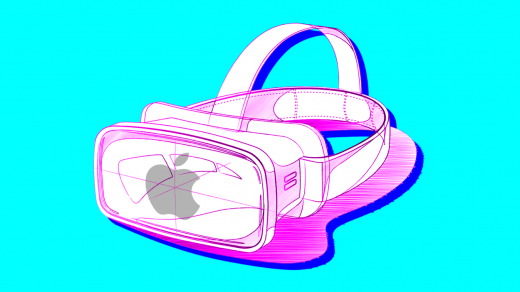How Apple’s headset could be a $3,000 flop—and a success
This story is from Fast Company’s new Plugged In newsletter, a weekly roundup of tech insights, news, and trends from global technology editor Harry McCracken, delivered to your inbox every Wednesday morning. Sign up for it here.
For a tech pundit, the smartest possible thing to say about Apple’s upcoming mixed-reality headset right now might be absolutely nothing.
Until Apple announces the gadget—possibly to be named “Apple Reality Pro”—having a truly informed opinion about it is impossible. The same was true 16-plus years ago for the original iPhone, and virtually nothing anyone had to say about that product before its release turned out to have any value whatsoever. (Exhibit A, from December 23, 2006: “Why the Apple phone will fail, and fail badly.”)
Still, we seem to be entering the phase when an upcoming Apple product, though fuzzy, shows signs of coming into focus. Last week, reports from the Apple world’s two most reliable sources of Apple intelligence tamped down expectations. First, Bloomberg’s Mark Gurman wrote that Apple’s hopes for the headset look more like the Apple Watch than the iPhone, with the initial version making only a modest splash. A few days later, analyst Ming-Chi Kuo tweeted that Apple has pushed back production of the headset and may not preview it at June’s WWDC confab as expected.
It’s impossible to anticipate the experience that Apple’s hardware and software might deliver until we see it ourselves. But both Gurman and Kuo reiterate a point about the device that’s remained consistent through more than two years of scuttlebutt: It’s expected to cost at least $3,000.
If that’s true, the headset will be a fundamentally different proposition than any of the company’s blockbuster products in this century. The original iPod, iPhone, iPad, Apple Watch, and AirPods weren’t cheap, but they were within reach of a decent percentage of the people who wanted to own them right from the start. A $3,000 headset would not be.
Then again, it might be a mistake to treat that price tag as a given. A week before the iPad was announced, a CNET writer provided helpful analysis of how it would fare based on the widely held assumption that it would cost $1,000. Instead, Apple surprised nearly everyone by launching its tablet with a starting price of $499.
For the moment, though, let’s assume that Apple’s initial headset will be priced beyond the reach of the masses. Given the current raw state of much of the technology necessary for immersive experiences delivered via head-worn hardware, it might even look like an unaffordable disappointment.
People would like an Apple headset to be an epoch-shifting phenom along the lines of the iPhone because . . . well, let’s face it, that would be more exciting than it being a dud, a modest success, or, like the iPad or Apple Watch, an extraordinary hit by any benchmark other than the iPhone’s example. But there are many ways for a product to matter. And regardless of how the headset fares in its first few months, I’m unsure if its implications will be immediately obvious.
For context, let’s delve way, way back to 1983. That’s when Apple introduced the Lisa, a wildly innovative computer that sold for a stratospheric $10,000—at the time, roughly equivalent to selling a headset for $3,000 in 2023. The Lisa went on to be most famous for failing. But it was also a crucial milestone along the way to the creation of the first Macintosh.
At $2,495, even the 1984 Mac was also much costlier than Apple‘s original goal, and sales were slow. More than a year after its introduction, InfoWorld declared it was “not generally considered to have met its expectations.” Rather than panicking, Apple just kept releasing new and better versions. Thirty-nine years later, incredibly, the Mac is still a thriving business.
I’m as curious as anyone about Apple’s headset. But what really matters is whether the company sees mixed reality as a fling or the next frontier of personal computing. Reports say that it’s already at work on additional, cheaper models. If it’s as patient with this idea as it was with the Mac, all the punditry in the world may not tell us much until another couple of years have passed.
If you have comments on this story or ideas for future Plugged In newsletters, drop me a line at hmccracken@fastcompany.com.
(8)



